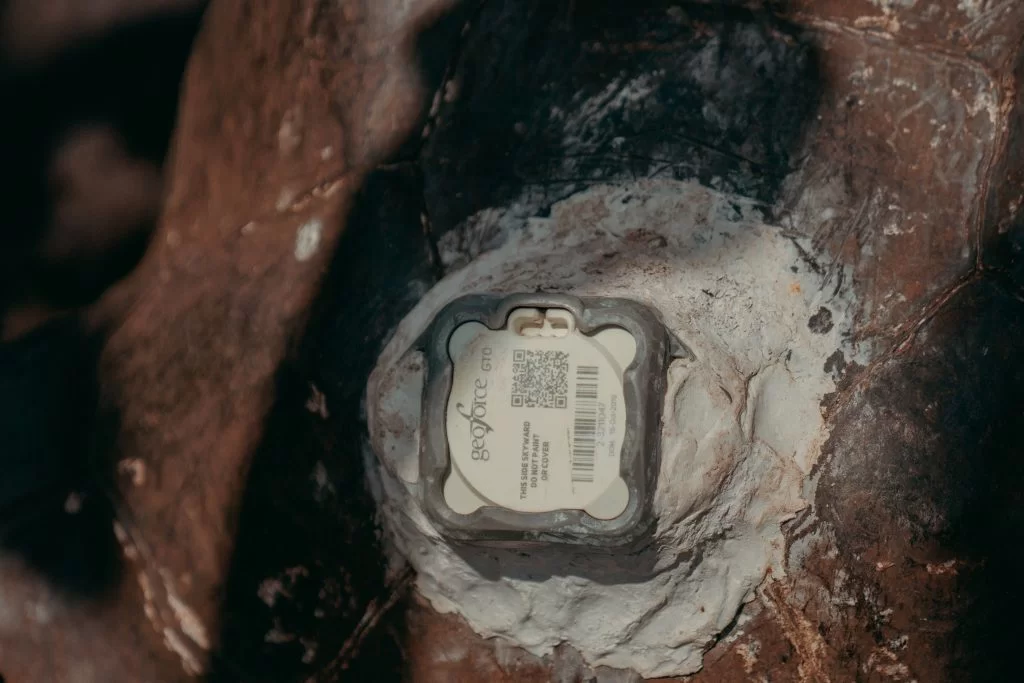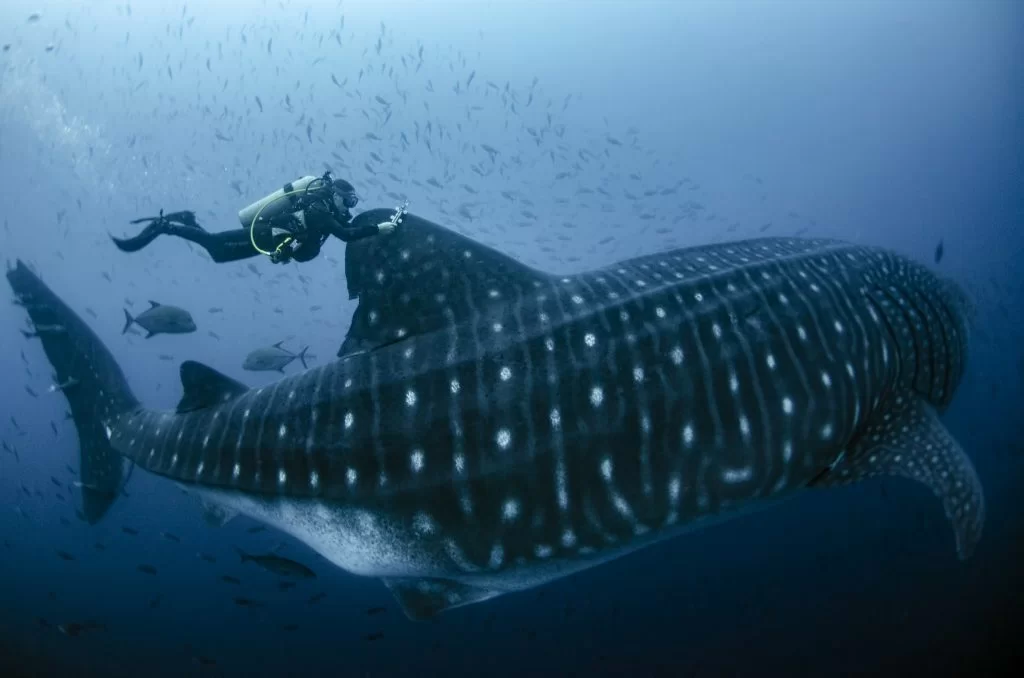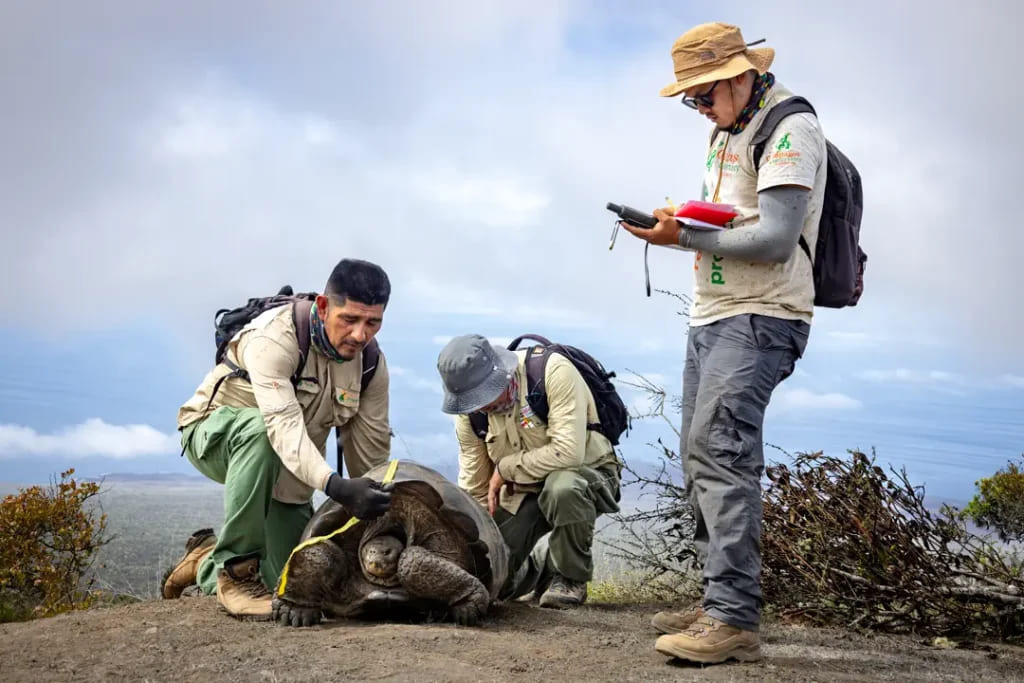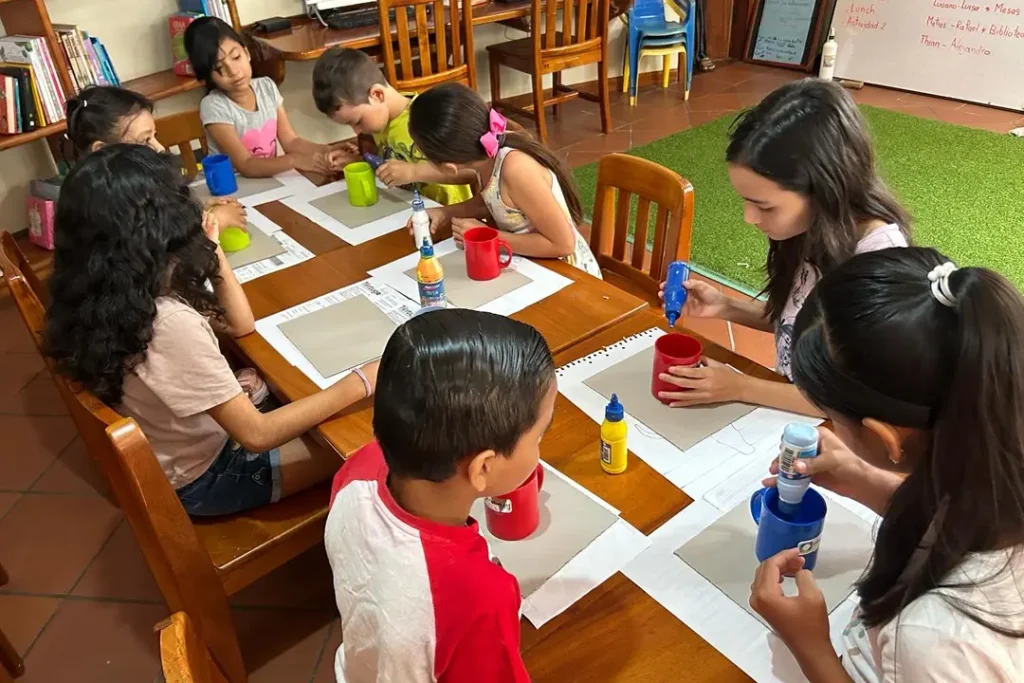PIT tags (Passive Integrated Transponders) are one example of technological innovations we use. They are subcutaneously placed in wildlife. PIT tags are a durable and unique identifier that allows us to track individual animals throughout their lives. This allows us to determine survival rates and population sizes, as well as measure growth rates and movements.
It is important to understand the activity patterns and movements and species, so we use GPS tracking devices which transmit their locations via satellite. Galapagos Conservancy supports Galapagos Whale Shark Project. This project aims to better understand and monitor the breeding and movements of this magnificent marine animal. Individuals are tagged with satellite tracking devices and monitored both inside and outside of the Galapagos Marine Reserve.
Camera traps are placed strategically to help us learn about wildlife behavior and estimate the population size. An infrared motion sensor will automatically capture a photo or video of the animal when it detects its presence. Over 100 camera traps have been hidden on Isabela Island, Wolf Volcano. These traps provide invaluable information about the interactions between Pink and Yellow Iguanas as well as the predatory activities of invasive cats, rats, and nesting habits for the endangered Pink Iguana.
These camera traps also have an important role in detecting poachers and hunters and reporting them in real-time so that we can deploy police and park rangers to arrest them. We would not have the technology to know how to save the Pink Iguana from certain extinction.
Drones have been used to obtain high-resolution imagery of the habitat for tortoises and iguanas and measure their quality. We are also using remotely sensed data from NASA satellites to assess how the Archipelago changes and to plan for future tortoise-rewilding programs.
Molecular genetics is also used to determine the exact species and origin of each individual, as well as genetic variability in rare species populations and levels of kinship. Genetic analysis was used to identify the island of origin of 185 juvenile Giant Tortoises that were taken from animal traffickers last year. These young tortoises will be able to live in the Santa Cruz breeding centre and have their home origins confirmed.
Finally, micrograms of scales and teeth from fishes and sea lions were collected to determine their stable isotope composition using an atomic mass spectrumrometer. This allows us to find out where these animals were born and what they eat.
These technological tools are crucial for conservation and management of Galapagos wildlife. These tools are so valuable and we share them with Conservando Galapagos and the Galapagos National Park Directorate to help promote conservation in Galapagos.

As seen here, GPS tracking devices are attached to the carapaces of Giant Tortoises to help scientists understand their movements, behaviors, and to combat poaching. © Joshua Vela/Galápagos Conservancy



